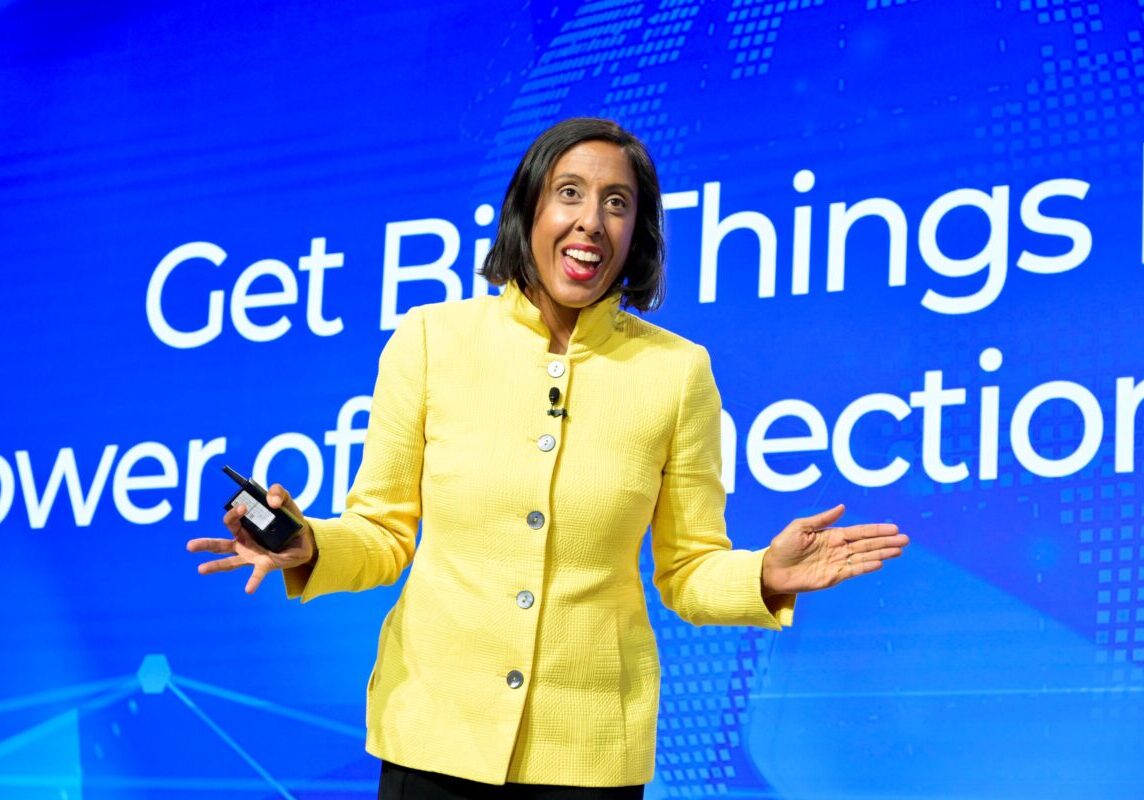Collaboration expert Erica Dhawan began her General Session remarks with what is almost certainly an ACEC Convention first: she asked the attendees to stand, cranked up Panjabi MC, and led hundreds of engineering professionals through an impromptu Bollywood dance lesson. That moment set the tone for the rest of Dhawan’s presentation, a lively and thoroughly entertaining session on navigating what she refers to not as the “new normal,” but, rather, the “better normal.”
Dhawan is one of America’s top female keynote speakers—a “never would’ve predicted this” title for a girl who grew up a deeply shy child of Indian immigrant parents in Pittsburgh. Because she and her family spoke Hindi at home, Dhawan spoke English with an Indian accent. This difference set her apart from her classmates but also sparked a unique ability to decipher body language. Dhawan has translated that ability into helping business leaders and their organizations develop what she calls “connectional intelligence—the capability to unlock new and unrealized value by fully maximizing the power of networks and relationships.” In the post-COVID world, where more and more business is conducted via screens, communication has lost the benefit of body language. Seventy percent of communication is now digital; at best, you’re seeing a face in a box. “Interacting has never been easier,” Dhawan said, “but connecting has never been harder.”
To illustrate that point, Dhawan shared a story told through text messages of Sarah and her supervisor John. Sarah sent messages to John that left room for ambiguous responses—and John responded ambiguously. The result: what could have been a five-minute phone call turned into hours of messages and unnecessary unease. It’s an exchange that would have benefited from what Dhawan calls “maniacal clarity.” John responded to Sarah’s text message with not a word, but a single letter: “K.” Sarah knew that meant something was OK, but what? Was that permission or simply acknowledgment? Or worse, was it dismissive and passive aggressive? In communication, clarity is power—both for the sender and the recipient. “Reading messages carefully is the new listening,” Dhawan said. “Writing clearly is the new empathy.”
With more and more meetings happening over video, reading and projecting digital body language requires a whole new set of skills. But even for in-person meetings, organizations need to rethink the assumption that all good ideas are born around a conference table. Dhawan offered suggestions for maximizing meeting effectiveness, starting with determining whether the meeting needs to happen at all. We’ve all seen the “I survived another meeting that could have been an email” mug. It’s a funny line that comes from a place of truth, born of excessive corporate meeting culture—too often, too long, too many people, not the right people. “Get everyone in any meeting involved in the first five minutes and define success,” Dhawan said. It drives engagement but also confirms that the right people are around the table.
Dhawan closed by emphasizing how important it is for organizations to get communication right. It all begins, she said, with a question that leaders must ask themselves: “How will you get big things done for all those counting on your wisdom, creativity, and heart?”





